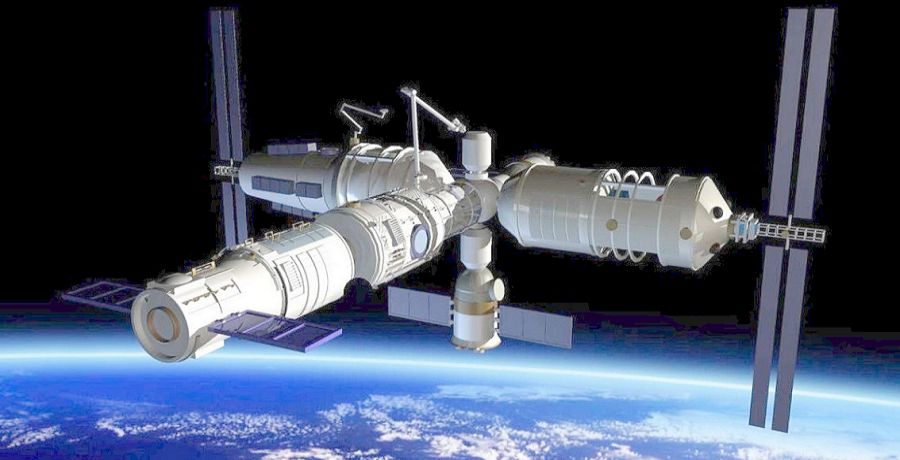|
China has a new symbol of its ambitions in space at the Zhuhai Air Show. It unveiled Tuesday, November 6 a replica of its first major space station (CSS), which should be launched around 2022 with the goal of succeeding the International Space Station (ISS).

The craft is surmounted by a mannequin in cosmonaut's attire and flanked by the national red and yellow flag constituting one of the main attractions of the show.
The lifetime of the CSS, also called Tiangong ("Heavenly Palace"), is estimated at 10 years. It would then become the only station to evolve in space after the planned retirement in 2024 of the international space station associating United States, Russia, Europe, Japan and Canada.
The Chinese space station will consist of three parts: a main module nearly 17 meters long - for living and working space - and two additional modules for scientific experiments. Three astronauts will be able to live permanently on the machine weighing at least 60 tons and equipped with solar panels. They will be able to carry out research in science, biology or microgravity.
China also announced in May with the UN Office for Space Affairs that its station would be open "to all countries" to conduct scientific experiments. Forty projects from twenty-seven countries and regions Institutes have been submitted by universities and public and private companies.
The European Space Agency (ESA) is already sending astronauts to train in China, with the goal that they will one day fly aboard the Chinese station.
Beijing is investing billions of euros in its space program, led by the army shipping satellites in orbit on its behalf (Earth observation, telecommunications, Beidou geolocation system) or for other countries. She is also planning to send a robot to Mars and humans to the Moon.
The Middle Kingdom, aware of commercial and military issues, will become one of the great powers of space alongside Russia, Japan and India.
|

